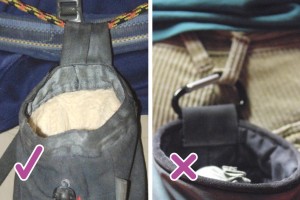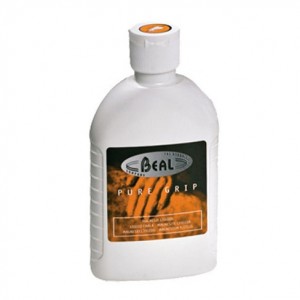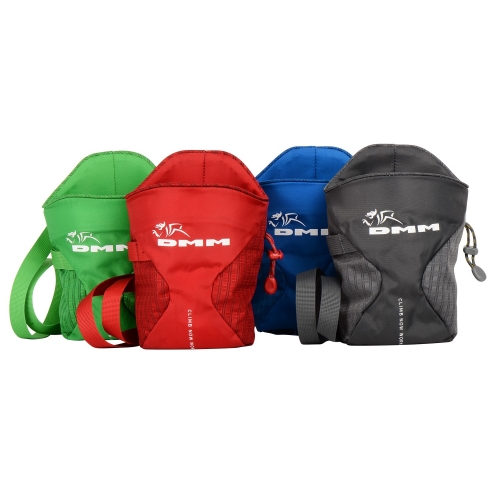There are many chalk bags all do a similar job, the main thing is to make sure it is big enough to get you hand into, preferably not just the tips of your fingers. The chalk you use is a matter of personal choice, although indoors a chalk ball prevents the air becoming saturated by chalk dust.
Different people attach chalk bags to them a in a variety of ways by a karabiner, specialist belt or cord. The belt or cord attachments are best at giving a high position of the chalk bag and also allowing you to move the chalk bag to the front or side if in a tight corner, groove or chimney.

Types of Chalk Bags
As well as a personal chalk bag you can get a chalk bucket for bouldering. These are bigger with a flat bottom to prevent them getting blown over. However they are still prone to this, so many climbers place some stones in the bottom to weight them down.
Types of Chalk
The type of chalk you put in the bag is up to you. You can buy a solid block from many sources or get loose chalk. Many companies make various claims over the best chalk however it is not obvious how well these claims would hold up to scientific scrutiny.
Generally for the majority of climbers the type pf chalk you use will not make too much difference to your performance. However if you are looking for the edge some people like to chalk up with liquid chalk before they start up a route.

Finally if you are climbing indoor, many climbing walls now insist that you use chalk balls, rather than loose chalk. These are essentially small muslin bags filled with chalk and placed in chalks bags. This limits the amount of chalk that gets into the air, making the indoor climbing experience much more pleasant. They can be used to dry hold when outdoor as well, although they don’t generally let you get as much chalk on your hands as loose chalk.

